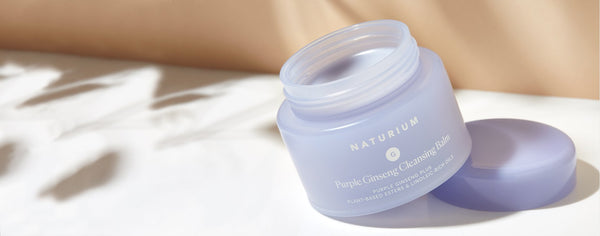The Complete Guide to Acids

Acids might initially sound intimidating, especially if you have sensitive skin, but, when formulated correctly, work gently to target dark spots, hyperpigmentation, fine lines and more. Read on, to learn all about acids and find the right ones for your skin type and concerns. Here is our complete guide to acids!
THE SCIENCE BEHIND IT…
OVERALL CLINICAL DATA ON SPECIFIC INGREDIENT(S) & HOW THEY FUNCTION:
Acids should be a staple in everyone’s skincare regimen. They vary in structure, size, and chemical properties and therefore vary in function and skin benefits. We will break down our favorite acids by structure, exploring how it dictates the function and therapeutic use, enabling anyone to pick the acids best suited to their skin concern.
Skincare acids go beyond just exfoliation. Each acid has additional benefits such as antibacterial, antiglycation, comedolytic, and anti-inflammatory properties. Acids also help lower the pH of your skin, which is naturally acidic. Studies have also shown that lowering the pH of your stratum corneum enhances bioprocesses and can help with your skin’s innate immunity and microbiome. Acidic pH treatments, such as the use of topical acids, enhance barrier recovery, improve stratum corneum cohesion, and improve skin hydration.1
The stratum corneum is a natural barrier with intercellular lipids organized in continuous lamellar bilayers. This inhibits movement of charged, hydrophilic, and large species favoring uncharged, hydrophobic, and small molecules. This is important when we dive into acids as the structure of the molecule and pH of the formula will dictate the size, charge, and hydrophilicity. Every acid has an innate pKa, the point at which half of the molecules are protonated (have their hydrogen ion) and uncharged and the other half are unprotonated (without their hydrogen ion) and charged. This pKa is unique to each acid and depends on the strength of the bond holding the hydrogen ion to the acid. This also dictates the strength of the acids. The uncharged species or free acid is better able to penetrate the skin barrier than the dissociated charged species.
When the pH of a formula is below an acid’s pKa there is more free acid than ionized salt species. Generally, the lower the pH the more free acid and the more exfoliation you get. This means a lower concentration of acid at a lower pH can provide the same exfoliation as a higher concentration of the same acid at a higher pH. So why not formulate at an extremely low pH for efficacy? If the pH is too low it results in redness, inflammation, postinflammatory hyperpigmentation, irritation, and stinging. There is a balancing act between pH and efficacy.
Carboxylic acids are extremely important in skincare and include alpha hydroxy acids, polyhydroxy acids, beta hydroxy acids, retinoic acid, tranexamic acid, and azelaic acid.2 Each of these skin beneficial acids has in common a carboxyl functional group noted as R-COOH and differ in the substitution or R group. The placement and number of hydroxyl or OH groups contributes to specific benefits and properties. 
Alpha Hydroxy Acids
Alpha hydroxy acids have a hydroxyl or OH group on the alpha or adjacent carbon of the carboxyl group. These acids are keratolytic agents, softening and loosening the upper layers of the stratum corneum to promote shedding. One proposed mechanism is the chelating of calcium ions necessary for cellular adhesion.3 AHAs work to reveal smoother, brighter, and more youthful skin. The common AHAs include glycolic acid, lactic acid, mandelic acid, tartaric acid, and malic acid.
Lactic acid is a skin smoothing and moisturizing alpha hydroxy acid known for its gentle exfoliation. It is a larger molecule than glycolic acid, resulting in less skin penetration and therefore less potential irritation. Lactic acid has proven effective in the treatment of photoaging, hyperpigmentation and dark spots, dry skin, and mild breakouts
Mandelic acid is an aromatic alpha hydroxy acid, making it more lipophilic or oil soluble than other AHAs, meaning it penetrates pores easier. On the other hand, it has a molecular weight, twice that of glycolic acid (152 Daltons), so it penetrates the skin more slowly. One study shows that mandelic acid increases sebum production, making it great for those with dry skin.7 The mechanisms of this acid are not all known, but it is known that it strengthens and supports collagen production, inhibits tyrosinase, and has antibacterial and anti-inflammatory properties. Mandelic Acid reduces blemishes and congestion, especially inflammatory congestion, while addressing discoloration, fine lines and wrinkles, and skin elasticity.
Glycolic acid is the smallest of the alpha hydroxy acids, weighing in around 76 Daltons. Due to its small molecular weight, it works on both the epidermal and dermal layers, increasing collagen and hyaluronic acid synthesis in the skin.4 It also regulates matrix degradation seen in photoaging and increases epidermal thickness. It has antibacterial properties when formulated below pH 4.00 and brightens skin by not only increasing cell turnover, but also by acting as a tyrosinase inhibitor.5,6 Glycolic Acid restores skin elasticity and vitality, fades spots and imperfections, evens skin texture and tone, enhances skin radiance, and improves fine lines and wrinkles.
Beta Hydroxy Acids
Beta hydroxy acids have a hydroxyl or OH group on the beta carbon or two carbons down from the carboxyl group. Although citric acid can be seen as both an alpha hydroxy acid and a beta hydroxy acid, salicylic acid is the only skincare acid, commonly referred to as a beta hydroxy acid. This beta hydroxy acid shares similar benefits with alpha hydroxy acids, including exfoliation, reduction in hyperpigmentation, and evening of skin texture.
Salicylic Acid, like mandelic acid, has an aromatic benzene ring, but is less water soluble than mandelic acid. The hydrophobicity allows salicylic acid to work inside the pores, clearing excess sebum and debris, resulting in reduced skin congestion and potentially pore size. It also means that salicylic acid’s exfoliation is not as pH dependent as the alpha hydroxy acids. This benzene ring also helps salicylic acid inhibit UVB-induced sunburn cell formation, so as to not increase skin UV-sensitivity, as seen with alpha hydroxy acids.8 It acts as a comedolytic, desmolytic, and anti-inflammatory agent. For a deeper dive on salicylic acid, read our article Everything You Need to Know About Our BHA Exfoliating Liquid 2%.
Polyhydroxy Acids
The prefix “poly” means “many,” thus polyhydroxy acids have two or more hydroxyl or OH groups on the molecule. The polyhydroxy acids are seen as “second generation” AHAs, since one of the hydroxyl groups is on the alpha carbon, therefore giving PHAs similar skin benefits as AHAs, but with some additional advantages.9 PHAs are larger molecules than AHAs, so their penetration is limited and gradual, which means less irritation for those with sensitive skin.10 The multiple hydroxyl groups also attract water, providing additional moisturization. Their antioxidant properties help prevent oxidative damage from UV exposure and fight glycation, sugar-induced sallowness and skin sagging. PHAs enhance skin barrier function and can enhance the therapeutic benefits of other actives.11 Gluconolactone is a polyhydroxy acid while lactobionic acid is actually a polyhydroxy bionic acid, a PHA attached to a sugar molecule. Gluconolactone and lactobionic acid do not provide the same degree of exfoliation as the traditional AHAs but they come with additional benefits and are a good starting point for those that have never used acids before.
Azelaic Acid
Azelaic Acid is a dicarboxylic acid, meaning there are two carboxyl functional groups on the molecule, one on each side of the carbon chain. It does not have hydroxyl or OH groups along the carbon chain, like AHAs or BHA. Azelaic acid is a “skin balancing” ingredient, addressing bioprocesses in the skin that are overreacting, and bringing them back to a normal state. This skin normalizer decreases hyperpigmentation without impacting normal pigmentation, normalizes cell turnover, and reduces blemishes without reducing sebum production. Due to its high molecular weight, it is a more gentle exfoliant and actually reduces skin sensitivity by reducing proinflammatory agents and acting as an antioxidant. Azelaic acid provides comedolytic and antimicrobial benefits to address blemishes while minimizing impact on skin’s natural microflora. It is commonly used to treat both acne and rosacea.12 Azelaic acid reduces bumps and evens skin texture, improves hyperpigmentation, reduces redness and inflammation, fades post-acne marks, and both treats and prevents skin congestion. Potassium azeloyl diglycinate, an azelaic acid derivative, combines the benefits of azelaic acid and glycine, in addition to normalizing sebum production.
Tranexamic Acid
Tranexamic acid is a monocarboxylic acid, structurally similar to the amino acid lysine. Tranexamic acid originates from the medical field and is used orally to reduce excessive bleeding. Topically, it is a potent skin brightener, normalizing pigment abnormalities such as melasma, post inflammatory hyperpigmentation, UV induced discoloration, and acne scarring. Tranexamic acid acts as both a competitive tyrosinase inhibitor, as well as a plasmin inhibitor, addressing two different mechanisms in melanogenesis or pigment production. It pairs well with Kojic Acid. Kojic acid is a pyrone, known for chelating or binding metals, and does not fall into the carboxylic acid family. It is a pyrone containing a six member ring with an oxygen and ketone group. Kojic acid acts as a tyrosinase inhibitor by chelating copper ions essential to melanogenesis.
Acids can easily be incorporated into any skincare regimen. They work on all skin types, for a multitude of benefits.

DISCLAIMER:
Lab Journals are intended to help educate on specific ingredients and skin care topics. They are designed for informational purposes only.
Information on ingredients used in cosmetic products appearing on the Site are not intended to be, nor should be interpreted as, advice or a recommendation concerning the use of any cosmetic product. If you have questions about the use of a cosmetic product, please consult a physician.
Please note any Naturium products with referenced ingredients are formulated for cosmetic use only.
SOURCES:
- 1https://www.ncbi.nlm.nih.gov/pubmed/30125885
- 2https://www.ncbi.nlm.nih.gov/pubmed/17147560
- 3https://www.ncbi.nlm.nih.gov/pmc/articles/PMC3047947/
- ...
- 4https://www.researchgate.net/publication/227897984_Glycolic_Acid_Treatment_Increases_Type_I_Collagen_mRNA_and_Hyaluronic_Acid_Content_of_Human_Skin
- 5https://www.ncbi.nlm.nih.gov/pmc/articles/PMC3834725/
- 6https://onlinelibrary.wiley.com/doi/abs/10.1034/j.1600-0625.12.s2.7.x
- 7https://www.ncbi.nlm.nih.gov/pmc/articles/PMC3834725/
- 8https://www.ncbi.nlm.nih.gov/pmc/articles/PMC2791365/
- 9https://clinicalgate.com/phas-and-bionic-acids-next-generation-hydroxy-acids/
- 10https://www.ncbi.nlm.nih.gov/pmc/articles/PMC3047947/
- 11https://www.ncbi.nlm.nih.gov/pubmed/15002656
- 12https://www.cosmeticsbusiness.com/news/article_page/The_many_functions_ofazelaic_acid/117986











